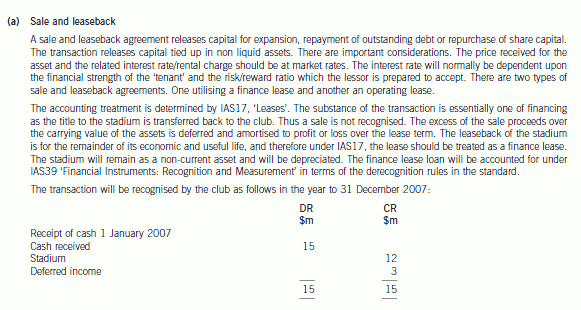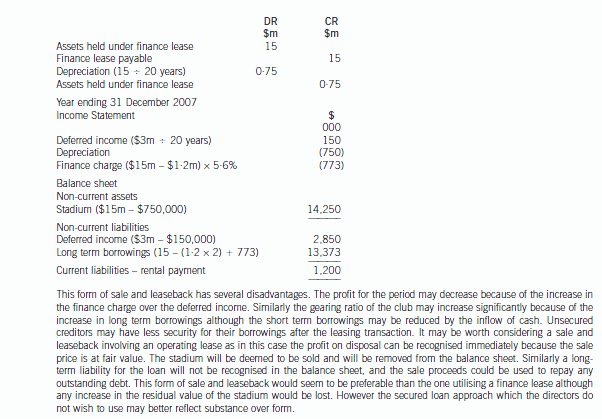如果你是云南省考生,教你几招,轻松让你在ACCA考试中保持专注!
发布时间:2020-01-10
不管是职场,生活,你都不可能在一长段时间内只专注一件事。而在面对ACCA考试有那么多门考试科目,怎样才能不手忙脚乱呢?因此,51题库考试学习网在这里教大家如何在考场中能够高度专注的考试,不会被其他琐事影响,从而影响考试成绩的小技巧。
首先,我们要消除一个思维误区。
人是不能进行真正的“多线程工作”的。你的大脑不可能像电脑那样,开着好几个后台,例如:一边放着音乐,一边让你聊微信,一边下载电影
你必须在某个时间段只专注一件事。
回想一下,你复习高数的时候,想着A考,看似是一心二用,但实际上你是复习了一会儿高数,然后想了一会儿A考,你努力把神思拉回来,又复习了一会儿高数,然后思维又切换到A考……
实际上你的大脑在某个时间点只集中在一件事情上,但因为它的重点在不停切换,造成了你大脑一片混沌,手忙脚乱的错觉。
有一个小实验是这样的:
所以复习效率低,也是因为你的思维在不停切换,浪费了大量不必要的时间。并且忙了大半天也没有任何一科有明显进展,这时沮丧挫败灰心自责一系列负面情绪都扑过来了,会让学习陷入恶性循环。
那到底要如何从容面对考试呢?
多线程任务,不是同时做多件事,而是将一个时间段划分好几份,来分配给不同任务。所以多线程学习的核心其实是任务管理。
我们只需要确定哪个时间段要做哪个任务,然后保证一段时间只做一件事。
比如上午集中复习高数,下午集中复习思修,晚上集中复习A考,甚至,也可以先集中复习期末,再专心复习A考。
这里51题库考试学习网提供几个方法:
1. 对时间进行规划。
比如3天以后要考思修,那么你就需要规划这3天,你每天要花多少时间来复(yu)习(xi)思修。你将每一科的计划按紧急程度列出来,写下每天每一科需要进行到什么进度。
这时你就有了每天的小目标。
2. 每天总结自己的进度条更新到哪里了。
建议还是要每天列出to do list,将目标尽量细化,然后在完成每个小任务之后打个勾。
这个习惯看上去非常鸡肋没用,其实超级有必要。这就像你在电脑上完成了一项工作,然后点击了保存。这样的仪式感会提醒我们,让我们的大脑更清楚:这件事已经做完了,可以松一口气不用再想它了。
3. 不一定要先做最紧急的事,先做最重要的事。
甚至,如果你的大脑坚持要每五分钟就从高数切换到思修,那建议你先背一会儿思修,将进度条拉长一点,消除你的焦虑以后再去安心刷高数。
4. 接受自己的不完美。
考A的同学一般都比较有上进心,对自己要求比较高。
一方面这是好事,能让你不断督促自己努力,进步;一方面这样的性格也容易让你苛责自己,产生自责感。所以经常会有同学,一遇到没有头绪的时候就开始心态崩坏,结局通常是越做越糟。
这里学姐要说的就是,偶尔发挥失常,进入状态困难是每个人都会出现的状况。如果遇到这种情况,不要轻易否定自己的能力。首先我们要相信自己可以应对,这样我们才能真正做到有条理,少出错。
如何保持长时间的专注?
除了手忙脚乱之外,很多同学还有一个问题,就是备考的时候忍不住玩手机。看书五分钟,聊八卦两小时,这种现象实在非常普遍。
很多狠人会采取最简单粗暴的方法:不带手机去图书馆。
但是如果我要查单词,信息检索,甚至要联络别人怎么办?况且以后大家工作要提高效率,也不可能使用关掉手机拒绝诱惑这种方法。
所以我们要如何在干扰的情况下,做到长时间的专注呢?
(1)先从能够快速集中注意力的事情做起。
备考时,每天在备考前抄一遍字帖。
一方面,这样难度不高又不那么吸引注意力的工作会让我的心静下来
ACCAer们也可以想想有什么类似的事情是可以让自己平静专注下来,又不容易沉迷的。在每天复习前先做一遍这件事,有一个良好的开端。
(2)尽量让手参与进来。
如果实在很难集中注意力,就采取抄书的方式。因为光看书,你很容易就跳过内容,尤其是那些很难的重点。而手写的速度慢,并且需要输出,所以你的大脑一定会对信息进行处理的。
但这个方法只在你发现心思非常浮躁的时候有效,大多数时候,你还是需要一边理解一边输出。
这时候就不要只是把内容照抄下来而已了。你需要做的,就是将书本上的重点语句换一种表达方式写下来。这时候你的大脑才会去主动思考。
此外,画思维导图也是很好的方法,寻找每个知识点之间的联系,并对下一节知识内容进行预期。
最后,提醒大家要适当地拒绝舒适。
下面小编为大家准备了 ACCA考试 的相关考题,供大家学习参考。
(c) Lamont owns a residential apartment above its head office. Until 31 December 2006 it was let for $3,000 a
month. Since 1 January 2007 it has been occupied rent-free by the senior sales executive. (6 marks)
Required:
For each of the above issues:
(i) comment on the matters that you should consider; and
(ii) state the audit evidence that you should expect to find,
in undertaking your review of the audit working papers and financial statements of Lamont Co for the year ended
31 March 2007.
NOTE: The mark allocation is shown against each of the three issues.
(c) Rent-free accommodation
(i) Matters
■ The senior sales executive is a member of Lamont’s key management personnel and is therefore a related party.
■ The occupation of Lamont’s residential apartment by the senior sales executive is therefore a related party
transaction, even though no price is charged (IAS 24 Related Party Disclosures).
■ Related party transactions are material by nature and information about them should be disclosed so that users of
financial statements understand the potential effect of related party relationships on the financial statements.
■ The provision of ‘housing’ is a non-monetary benefit that should be included in the disclosure of key management
personnel compensation (within the category of short-term employee benefits).
■ The financial statements for the year ended 31 March 2007 should disclose the arrangement for providing the
senior sales executive with rent-free accommodation and its fair value (i.e. $3,000 per month).
Tutorial note: Since no price is charged for the transaction, rote-learned disclosures such as ‘the amount of outstanding
balances’ and ‘expense recognised in respect of bad debts’ are irrelevant.
(ii) Audit evidence
■ Physical inspection of the apartment to confirm that it is occupied.
■ Written representation from the senior sales executive that he is occupying the apartment free of charge.
■ Written representation from the management board confirming that there are no related party transactions requiring
disclosure other than those that have been disclosed.
■ Inspection of the lease agreement with (or payments received from) the previous tenant to confirm the $3,000
monthly rental value.
3 Seejoy is a famous football club but has significant cash flow problems. The directors and shareholders wish to take
steps to improve the club’s financial position. The following proposals had been drafted in an attempt to improve the
cash flow of the club. However, the directors need advice upon their implications.
(a) Sale and leaseback of football stadium (excluding the land element)
The football stadium is currently accounted for using the cost model in IAS16, ‘Property, Plant, and Equipment’.
The carrying value of the stadium will be $12 million at 31 December 2006. The stadium will have a remaining
life of 20 years at 31 December 2006, and the club uses straight line depreciation. It is proposed to sell the
stadium to a third party institution on 1 January 2007 and lease it back under a 20 year finance lease. The sale
price and fair value are $15 million which is the present value of the minimum lease payments. The agreement
transfers the title of the stadium back to the football club at the end of the lease at nil cost. The rental is
$1·2 million per annum in advance commencing on 1 January 2007. The directors do not wish to treat this
transaction as the raising of a secured loan. The implicit interest rate on the finance in the lease is 5·6%.
(9 marks)
Required:
Discuss how the above proposals would be dealt with in the financial statements of Seejoy for the year ending
31 December 2007, setting out their accounting treatment and appropriateness in helping the football club’s
cash flow problems.
(Candidates do not need knowledge of the football finance sector to answer this question.)


4 The Better Agriculture Group (BAG), which has a divisional structure, produces a range of products for the farming
industry. Divisions B and C are two of its divisions. Division B sells a fertiliser product (BF) to customers external to
BAG. Division C produces a chemical (CC) which it could transfer to Division B for use in the manufacture of its
product BF. However, Division C could also sell some of its output of chemical CC to external customers of BAG.
An independent external supplier to The Better Agriculture Group has offered to supply Division B with a chemical
which is equivalent to component CC. The independent supplier has a maximum spare capacity of 60,000 kilograms
of the chemical which it is willing to make available (in total or in part) to Division B at a special price of $55 per
kilogram.
Forecast information for the forthcoming period is as follows:
Division B:
Production and sales of 360,000 litres of BF at a selling price of $120 per litre.
Variable conversion costs of BF will amount to $15 per litre.
Fixed costs are estimated at $18,000,000.
Chemical (CC) is used at the rate of 1 kilogram of CC per 4 litres of product BF.
Division C:
Total production capacity of 100,000 kilograms of chemical CC.
Variable costs will be $50 per kilogram of CC.
Fixed costs are estimated at $2,000,000.
Market research suggests that external customers of BAG are willing to take up sales of 40,000 kilograms of CC at a
price of $105 per kilogram. The remaining 60,000 kilograms of CC could be transferred to Division B for use in
product BF. Currently no other market external to BAG is available for the 60,000 kilograms of CC.
Required:
(a) (i) State the price/prices per kilogram at which Division C should offer to transfer chemical CC to Division
B in order that the maximisation of BAG profit would occur if Division B management implement rational
sourcing decisions based on purely financial grounds.
Note: you should explain the basis on which Division B would make its decision using the information
available, incorporating details of all relevant calculations. (6 marks)
(a) (i) In order to facilitate BAG profit maximising decisions the following strategy should apply:
Division C should offer to transfer chemical CC to Division B at marginal cost plus opportunity cost. This would apply
as follows:
– 40,000 kilograms of CC at $105 per kilogram since this is the price that could be achieved from sales to external
customers of BAG.
– 60,000 kilograms of CC at marginal cost of $50 per kilogram since no alternative opportunity exists.
Division B has a sales forecast of 360,000 litres of product BF. This will require 360,000/4 = 90,000 kilograms of
chemical CC input.
Based on the pricing by Division C indicated above, Division B would choose to purchase 60,000 kilograms of CC from
Division C at $50 per kilogram, since this is less than the $55 per kilogram quoted by the independent supplier.
Division B would purchase its remaining requirement for 30,000 kilograms of CC from the independent supplier at $55
per kilogram since this is less than the $105 per kilogram at which Division C would offer to transfer its remaining output
– given that it can sell the residual output to external customers of BAG.
(c) Discuss the ethical and social responsibilities of the Beth Group and whether a change in the ethical and
social attitudes of the management could improve business performance. (7 marks)
Note: requirement (c) includes 2 professional marks for development of the discussion of the ethical and social
responsibilities of the Beth Group.
(c) Corporate social responsibility (CSR) is concerned with business ethics and the company’s accountability to its stakeholders,
and about the way it meets its wider obligations. CSR emphasises the need for companies to adopt a coherent approach to
a range of stakeholders including investors, employees, suppliers, and customers. Beth has paid little regard to the promotion
of socially and ethically responsible policies. For example, the decision to not pay the SME creditors on the grounds that they
could not afford to sue the company is ethically unacceptable. Additionally, Beth pays little regard to local customs and
cultures in its business dealings.
The stagnation being suffered by Beth could perhaps be reversed if it adopted more environmentally friendly policies. The
corporate image is suffering because of its attitude to the environment. Environmentally friendly policies could be cost effective
if they help to increase market share and reduce the amount of litigation costs it has to suffer. The communication of these
policies would be through the environmental report, and it is critical that stakeholders feel that the company is being
transparent in its disclosures.
Evidence of corporate misbehaviour (Enron, World.com) has stimulated interest in the behaviour of companies. There has
been pressure for companies to show more awareness and concern, not only for the environment but for the rights and
interests of the people they do business with. Governments have made it clear that directors must consider the short-term
and long-term consequences of their actions, and take into account their relationships with employees and the impact of the
business on the community and the environment. The behaviour of Beth will have had an adverse effect on their corporate
image.
CSR requires the directors to address strategic issues about the aims, purposes, and operational methods of the organisation,
and some redefinition of the business model that assumes that profit motive and shareholder interests define the core purpose
of the company. The profits of Beth will suffer if employees are not valued and there is poor customer support.
Arrangements should be put in place to ensure that the business is conducted in a responsible manner. The board should
look at broad social and environmental issues affecting the company and set policy and targets, monitoring performance and
improvements.
声明:本文内容由互联网用户自发贡献自行上传,本网站不拥有所有权,未作人工编辑处理,也不承担相关法律责任。如果您发现有涉嫌版权的内容,欢迎发送邮件至:contact@51tk.com 进行举报,并提供相关证据,工作人员会在5个工作日内联系你,一经查实,本站将立刻删除涉嫌侵权内容。
- 2020-03-11
- 2020-03-29
- 2020-01-10
- 2020-05-14
- 2020-02-28
- 2020-04-15
- 2020-05-03
- 2020-01-10
- 2020-01-02
- 2020-01-30
- 2019-07-20
- 2020-02-20
- 2020-01-09
- 2020-01-10
- 2020-02-20
- 2020-04-24
- 2020-02-06
- 2020-04-18
- 2020-04-09
- 2021-07-28
- 2020-01-10
- 2020-09-03
- 2020-04-19
- 2020-05-07
- 2020-05-15
- 2020-01-10
- 2020-03-31
- 2020-04-09
- 2020-01-10
- 2020-05-17